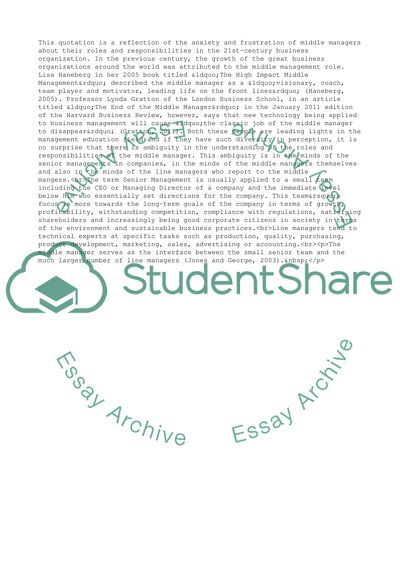Cite this document
(The Changing Role of Middle Managers Essay Example | Topics and Well Written Essays - 1750 words, n.d.)
The Changing Role of Middle Managers Essay Example | Topics and Well Written Essays - 1750 words. Retrieved from https://studentshare.org/management/1797011-the-topic-is-about-critical-analysis-for-management-please-find-the-essay-title-in-the-attached-document
The Changing Role of Middle Managers Essay Example | Topics and Well Written Essays - 1750 words. Retrieved from https://studentshare.org/management/1797011-the-topic-is-about-critical-analysis-for-management-please-find-the-essay-title-in-the-attached-document
(The Changing Role of Middle Managers Essay Example | Topics and Well Written Essays - 1750 Words)
The Changing Role of Middle Managers Essay Example | Topics and Well Written Essays - 1750 Words. https://studentshare.org/management/1797011-the-topic-is-about-critical-analysis-for-management-please-find-the-essay-title-in-the-attached-document.
The Changing Role of Middle Managers Essay Example | Topics and Well Written Essays - 1750 Words. https://studentshare.org/management/1797011-the-topic-is-about-critical-analysis-for-management-please-find-the-essay-title-in-the-attached-document.
“The Changing Role of Middle Managers Essay Example | Topics and Well Written Essays - 1750 Words”, n.d. https://studentshare.org/management/1797011-the-topic-is-about-critical-analysis-for-management-please-find-the-essay-title-in-the-attached-document.


